
The scarab beetle subfamily Scarabaeinae consists of species collectively called true dung beetles. Most of the beetles of this subfamily feed exclusively on dung. However, some may feed on decomposing matter including carrion, decaying fruits and fungi. Dung beetles can be placed into three structural guilds based on their method of dung processing namely rollers (telecoprids), dwellers (endocoprids) and tunnelers (paracoprids). Dung removal and burial by dung beetles result in ecological benefits such as soil aeration and fertilization; improved nutrient cycling and uptake by plants, increase in Pasture quality, biological control of pest flies and intestinal parasites and secondary seed dispersal. Well-known members include the genera Scarabaeus and Sisyphus, and Phanaeus vindex.

Flower chafers are a group of scarab beetles comprising the subfamily Cetoniinae. Many species are diurnal and visit flowers for pollen and nectar, or to browse on the petals. Some species also feed on fruit. The group is also called fruit and flower chafers, flower beetles and flower scarabs. There are around 4,000 species, many of them still undescribed.
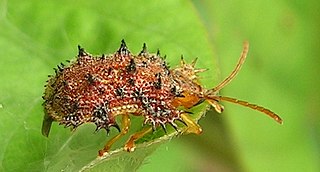
The Cassidinae are a subfamily of the leaf beetles, or Chrysomelidae. The antennae arise close to each other and some members have the pronotal and elytral edges extended to the side and covering the legs so as to give them the common name of tortoise beetles. Some members, such as in the tribe Hispini, are notable for the spiny outgrowths to the pronotum and elytra.

Omorgus is a genus of beetles of the family Trogidae with about 140 species worldwide. Omorgus beetles are generally between 9 and 20 mm long.
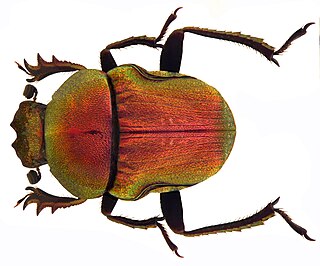
Gymnopleurus is a genus of Scarabaeidae or dung beetles in the superfamily Scarabaeoidea.

Heliocopris is a genus of Scarabaeidae or scarab beetles in the superfamily Scarabaeoidea. Forty-seven of the fifty-two known species are found in Africa, but a few are found in southern and southeast Asia.

Lampetis is a genus of beetles in the family Buprestidae, containing the following species:

Chrysochroa fulminans is the type species of jewel beetle in its genus; it belongs to the family Buprestidae, tribe Chrysochroini and subgenus Chrysochroa.

Johan Wilhelm van Lansberge was a Dutch diplomat and entomologist.

Chrysocoris is a genus of brightly colored shield-backed bugs belonging to the family Scutelleridae, erected by Carl Wilhelm Hahn in 1834. Species are recorded from South and SE Asia.
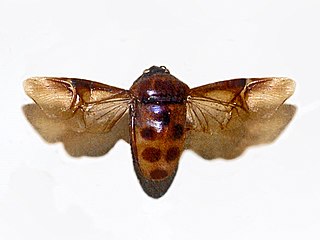
Calliphara is a genus of insect in the family Scutelleridae (Hemiptera).

Liatongus is a genus of dung beetles in the subfamily Scarabaeinae of the scarab beetle family. At least part of the upper surfaces are without hairs; the head and pronotal disc are generally sculptured; and the genae are rounded, with little or no indentation between the clypeus and the genae. Length ranges from 7.4 to 10.9 mm. Colours vary: they may be uniform brown or dull purple, or have red, white or yellow patterns on the elytra.

Pentodontini is a tribe of rhinoceros beetles in the family Scarabaeidae. There are over 100 genera in the tribe Pentodontini.
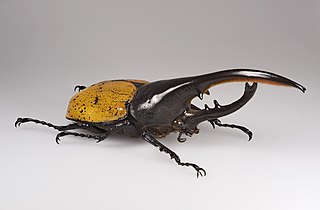
Dynastini is a tribe of rhinoceros beetles in the family Scarabaeidae.
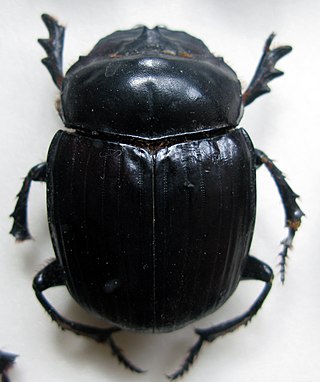
Synapsis is a genus of Asian dung beetles in the tribe Coprini, erected by Henry Walter Bates.

The Scarabaeini are a tribe of old-world dung beetle genera, erected by Pierre André Latreille.
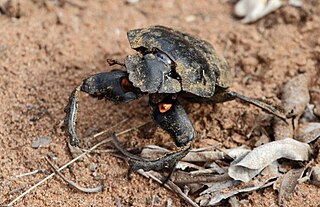
Pachylomera is a genus of dung beetle from the family Scarabaeidae and tribe Scarabaeini, with records from Africa south of the equator.




















